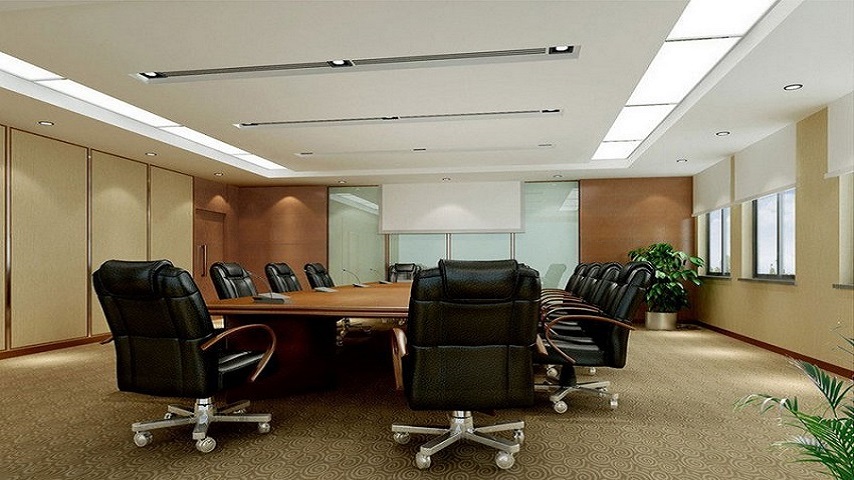The Latest Trends in Office Furniture: Workstations Designed for Productivity

In today’s fast-paced business world, the office environment plays a crucial role in shaping how employees perform and feel at work. As companies increasingly recognize the link between design and productivity, modern office furniture — particularly workstations — has evolved to support collaboration, comfort, and efficiency. The latest trends in office furniture reflect a balance between aesthetics, ergonomics, and functionality, helping teams perform at their best while fostering creativity and well-being.
1. Ergonomic Design Takes Center Stage
Ergonomics remains one of the most influential trends in office furniture design. As employees spend long hours at their desks, comfort and posture support have become top priorities. Adjustable-height desks, ergonomic chairs with lumbar support, and monitor stands that promote eye-level positioning are now standard features in modern workstations.
Standing desks and sit-stand workstations are especially popular, allowing employees to alternate between sitting and standing throughout the day. This flexibility helps reduce fatigue, improve circulation, and boost focus — leading to higher overall productivity.
2. Flexible and Modular Workstations
The modern workplace is dynamic, and office furniture must adapt quickly to changing needs. Modular workstations are designed with flexibility in mind — they can be rearranged, expanded, or downsized to fit team structures and project requirements.
These systems often feature movable partitions, shared benching layouts, and reconfigurable components that encourage collaboration without sacrificing individual focus. The flexibility of modular designs also supports hybrid work environments, where employees can easily transition between solo and team-based tasks.
3. Integration of Technology
Technology integration is no longer a luxury — it’s a necessity. The latest office furniture trends include built-in power outlets, wireless charging pads, USB hubs, and cable management systems that keep workspaces organized and clutter-free.
Workstations are now being designed to seamlessly accommodate devices like laptops, monitors, and tablets. Some even feature integrated lighting, smart sensors, or connectivity tools for digital meetings. This trend ensures that technology enhances productivity rather than becoming a distraction.
4. Sustainable and Eco-Friendly Materials
As environmental awareness grows, sustainability has become a major consideration in office furniture design. Companies are opting for eco-friendly materials like recycled wood, bamboo, and non-toxic finishes. Manufacturers are also prioritizing long-lasting, recyclable furniture to reduce waste.
Choosing sustainable office furniture not only supports the planet but also creates a healthier workplace. Natural materials, breathable fabrics, and plant-inspired designs bring warmth and balance to the office, promoting well-being and a sense of connection to nature.
5. Minimalist and Clean Aesthetic
Cluttered spaces can lead to cluttered minds. Minimalist workstation designs emphasize clean lines, sleek surfaces, and simple forms that create a calm and focused atmosphere. Neutral tones like white, gray, and beige dominate this trend, often accented with soft pastels or earthy shades to maintain visual interest.
Storage solutions such as under-desk drawers and concealed cabinets keep essential items within reach while maintaining an uncluttered appearance. The result is a workspace that feels open, organized, and conducive to deep concentration.
6. Collaborative Zones and Shared Spaces
Collaboration is key in modern workplaces, and furniture design now reflects that shift. Many offices are replacing traditional cubicles with shared workbenches, breakout areas, and collaborative pods. These spaces encourage spontaneous discussions and teamwork, fostering innovation and connection among employees.
Office designers are also integrating multi-functional furniture — such as movable tables and modular seating — to allow teams to quickly reconfigure spaces for meetings, brainstorming sessions, or presentations.
7. Focus on Well-Being and Comfort
Employee well-being has become central to workplace design. Soft seating areas, lounge-inspired workstations, and relaxation corners are being introduced to make the office feel more inviting and less rigid. Biophilic design elements — such as indoor plants, natural light, and organic textures — are increasingly incorporated to reduce stress and improve air quality.
Some modern workstations even feature acoustic panels and noise-reducing materials to enhance focus in open-plan offices. These elements create a balanced environment where comfort and concentration coexist harmoniously.
8. Customization and Personal Touch
Today’s employees want their workspace to reflect their personality and working style. Customizable office furniture — from adjustable lighting and modular desk accessories to color and finish options — allows individuals to create a setup that feels uniquely theirs. Personalization boosts satisfaction, which in turn enhances productivity and retention.
Conclusion
The latest trends in office furniture are reshaping the way we think about workplace productivity. By combining ergonomic comfort, flexibility, sustainability, and technological integration, modern workstations are more than just desks — they are productivity hubs that adapt to the evolving needs of teams.
Businesses that invest in thoughtfully designed office furniture not only enhance performance but also create an environment where employees feel motivated, valued, and inspired. In the modern era, a well-designed workstation is no longer a luxury — it’s a strategic advantage.
Designing Smarter Labs: The Role of Ergonomic and Modular Desks
- Art
- Causes
- Crafts
- Dance
- Drinks
- Film
- Fitness
- Food
- Παιχνίδια
- Gardening
- Health
- Κεντρική Σελίδα
- Literature
- Music
- Networking
- άλλο
- Party
- Religion
- Shopping
- Sports
- Theater
- Wellness


